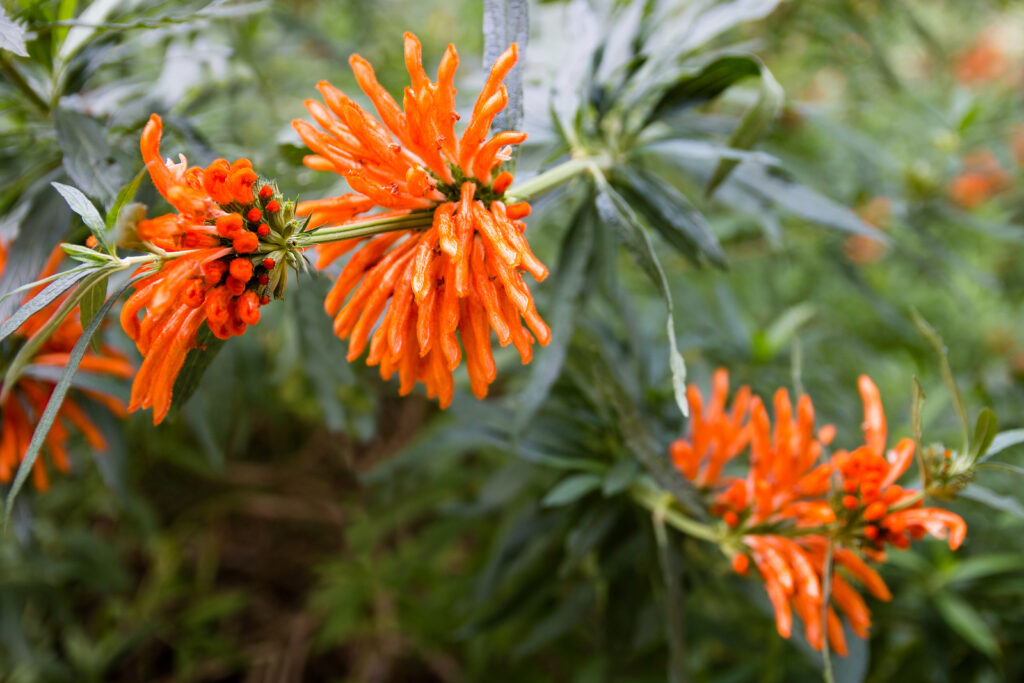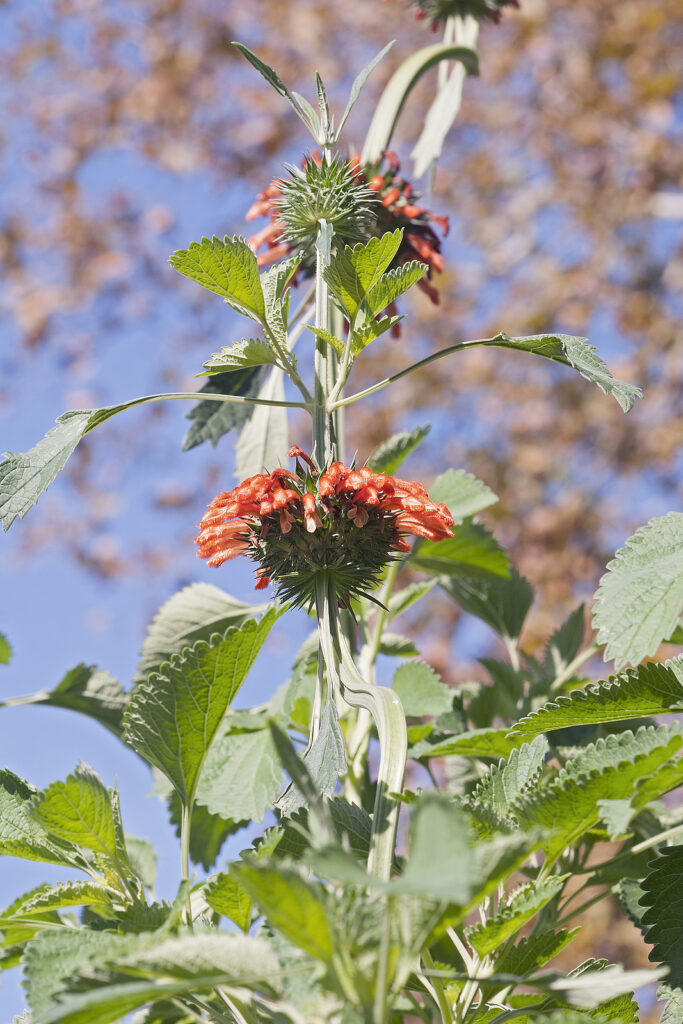Leonotis–commonly called lion’s ear or lion’s tail–is an open-branched perennial that bears clusters of showy, two-lipped flowers in tiers along upright stems. The blooms come in red-orange, scarlet, and orange, as well as white. The common name, lion’s ear refers to the flowers’ corollas (petals) that resemble lion’s ears.
Leonotis can be grown in borders and against walls. They are a good choice for growing in containers. In cold-winter regions, Leonotis can be grown as a bedding plant replaced annually. It can be overwintered indoors in a bright, cool (50° to 65°F) spot.
Leonotis is a genus of 30 species of aromatic evergreen to semi-evergreen annuals, perennials, subshrubs, and shrubs. Leonotis is native to grasslands in South Africa.

Get to know Leonotis
- Plant type: Evergreen shrub
- Growing zones and range: Zones 9 to 11
- Hardiness: Hardy to Zone 9; can be grown indoors
- Height and width: 3 to 6 feet (1-2m) tall and wide,
- Foliage: Aromatic, lance-shaped to ovate leaves are 2 to 5 inches long.
- Flowers: Dense whorls of downy two-lipped orange flowers in tiers on upright stems; flower colors are red-orange, scarlet, and orange, as well as white.
- Bloom time: Summer into fall
- Uses: Mixed beds and borders or in containers, either set on terraces or sunk to the rim in the soil.
- Garden companions: Lavenders and fall blooming salvias
- Common name: Lion’s ear, lion’s tail, wild dagga
- Botanical name: Leonotis
- Family name: Lamiaceae
- Origin: South Africa
Where to plant Leonotis
- Plant Leonotis in full sun.
- Leonotis will grow in average, well-drained soil.
When to plant Leonotis
- Set container-grown Leonotis outdoors after the last frost date, once the soil has warmed to 50°F.
Planting and spacing Leonotis
- Space Leonotis 3 to 6 feet (1-2m).
How to water and feed Leonotis
- Water Leonotis regularly; keep the soil just moist but not wet.
- Fertilize Leonotis with an all-purpose, slow-release organic fertilizer in spring.
Leonotis care
- Stake Leonotis as necessary.
- Pinch seed-grown or young cutting-grown plants to encourage branching.
- Prune Leonotis shape plants in late winter or early spring; cut them back hard if necessary.
- If burned by frost, Leonotis can be cut back to generate new growth in spring.
Leonotis pests and diseases
- Leonotis is susceptible to gray mold.
- Leonotis can be attacked by spider mites and whiteflies, especially when grown indoors.

Leonotis propagation
- Sow seeds indoors 8 to 10 weeks before the last spring frost date at 55°F to 65°F.
- Start from greenwood cuttings taken in spring or summer.
Leonotis varieties to grow
- L. leonurus. Lion’s ear. Tender perennial or small shrub can grow to 6 feet tall but may grow shorter; bears aromatic, lance-shaped leaves and 2 ½-inch-long, orange-red to scarlet flowers in fall; will continue to bloom indoors in winter.
- L. ocymifolia. Lion’s ear. Tender perennial that can grow to 10 feet tall; bears ovate, aromatic leaves with toothed margins and whorls of 1 ½-inch-long orange flowers in late summer and fall.















